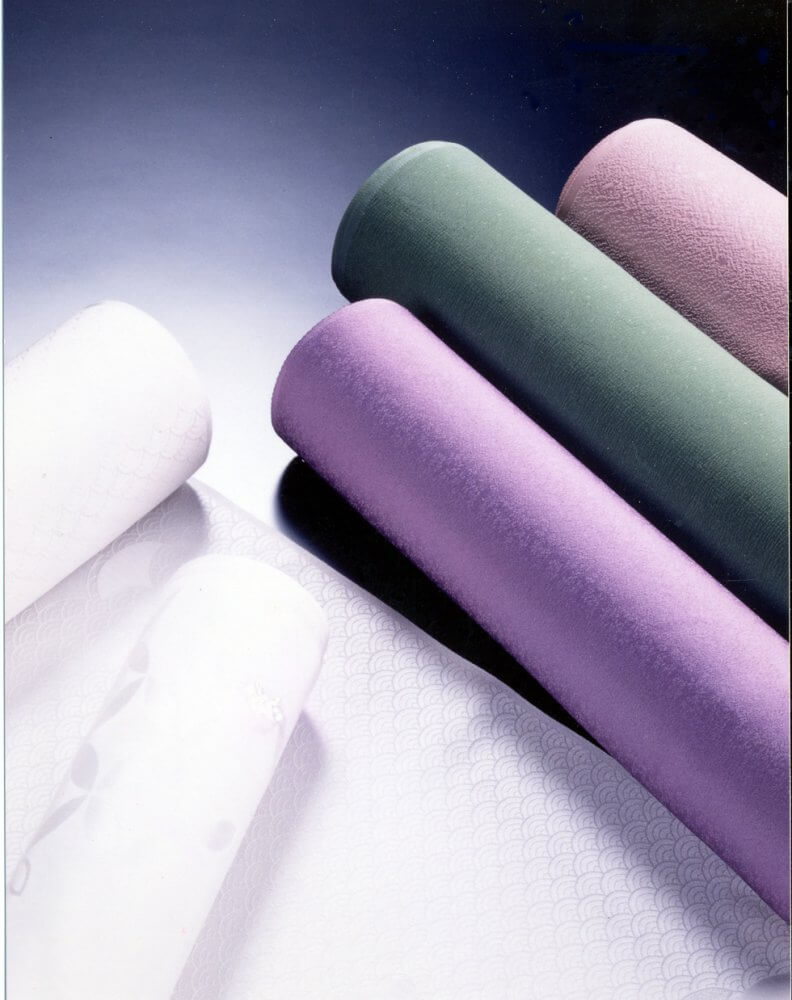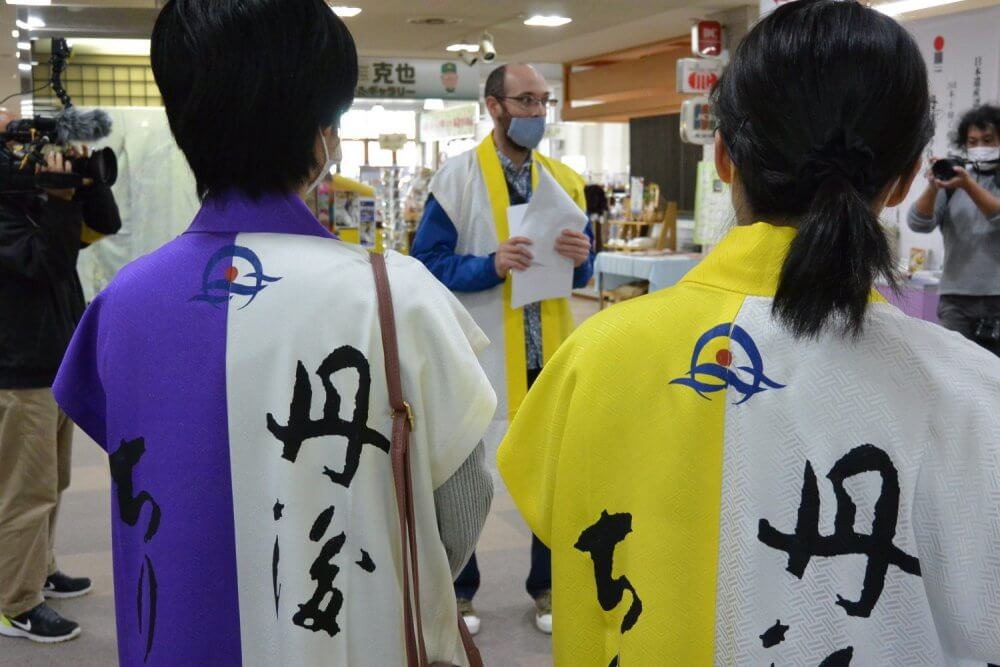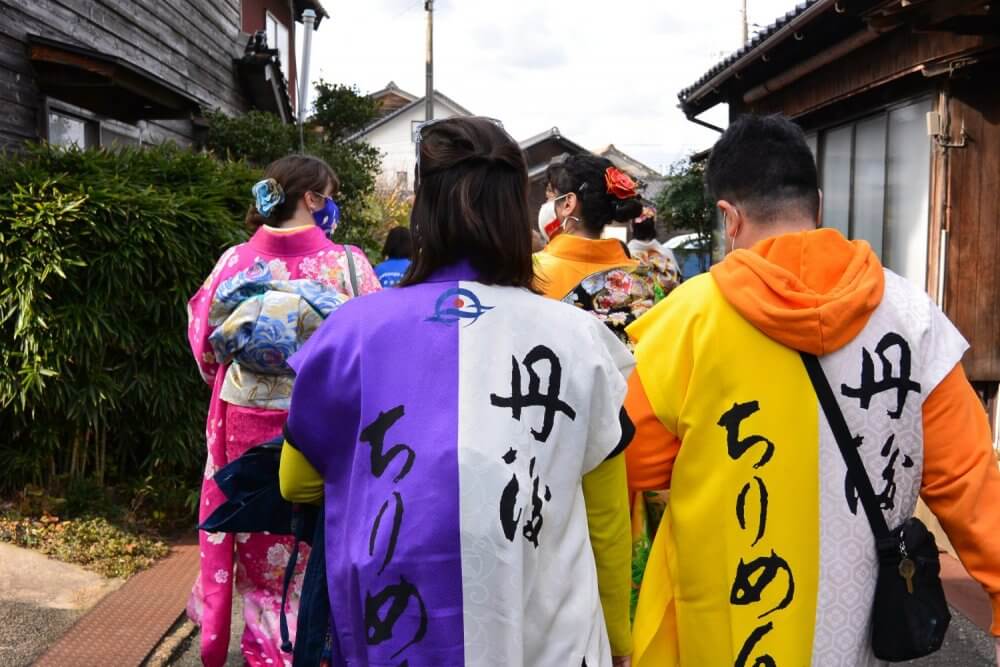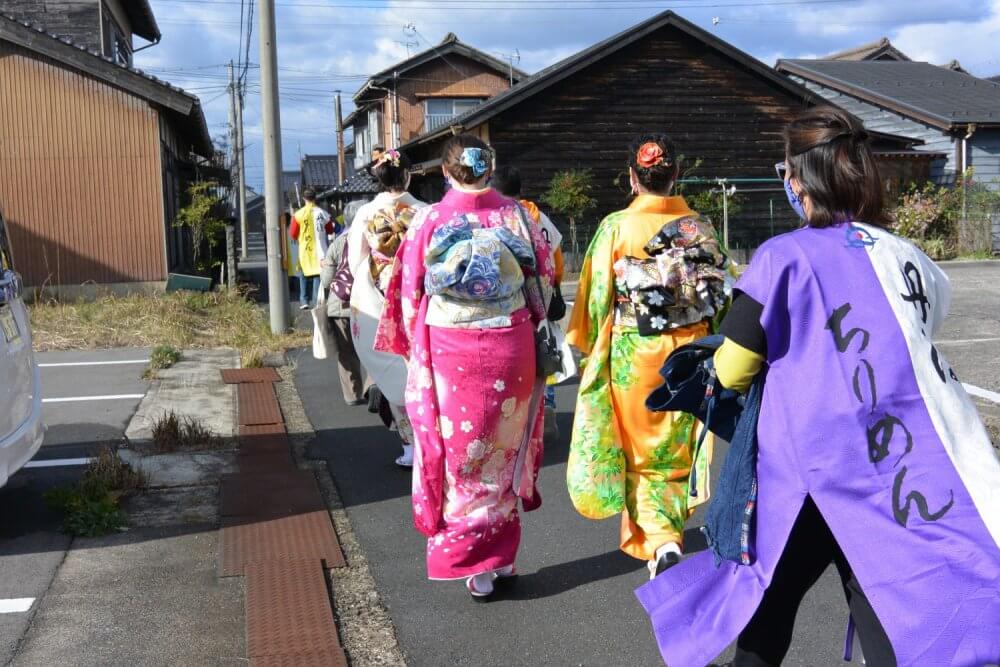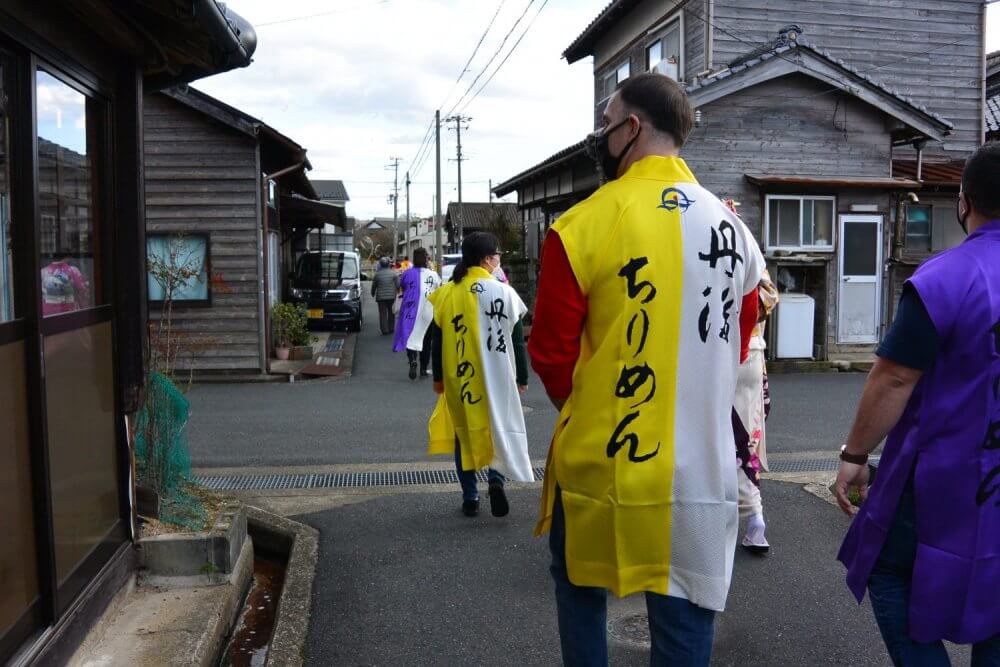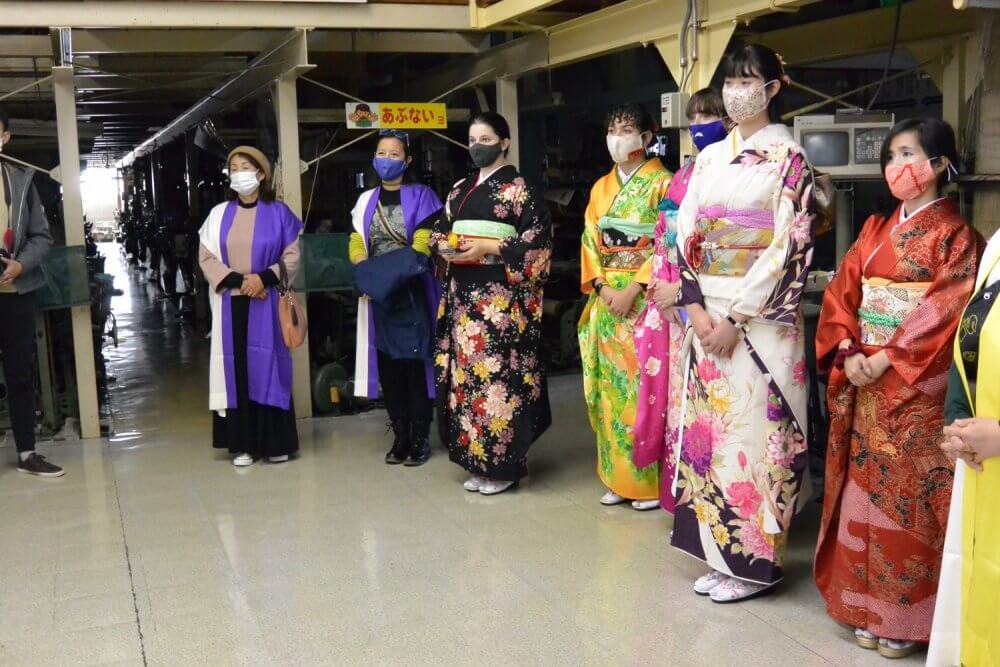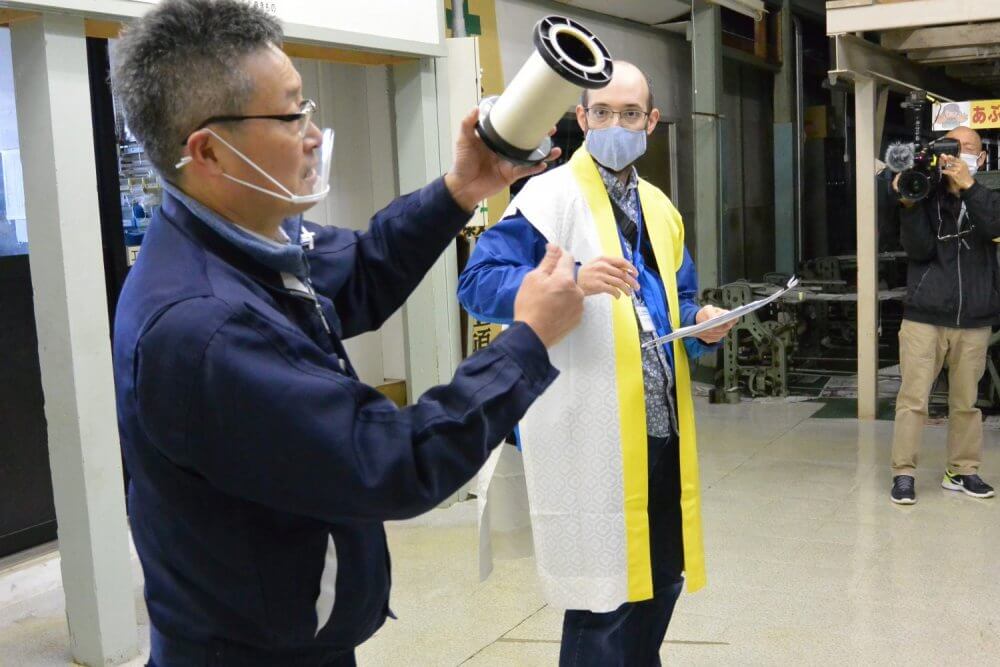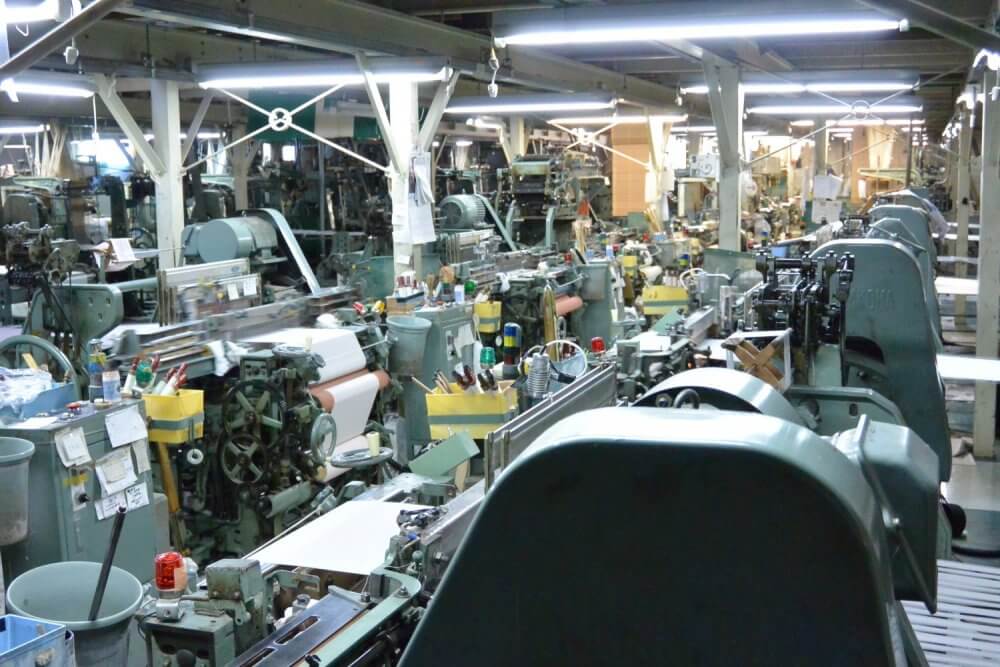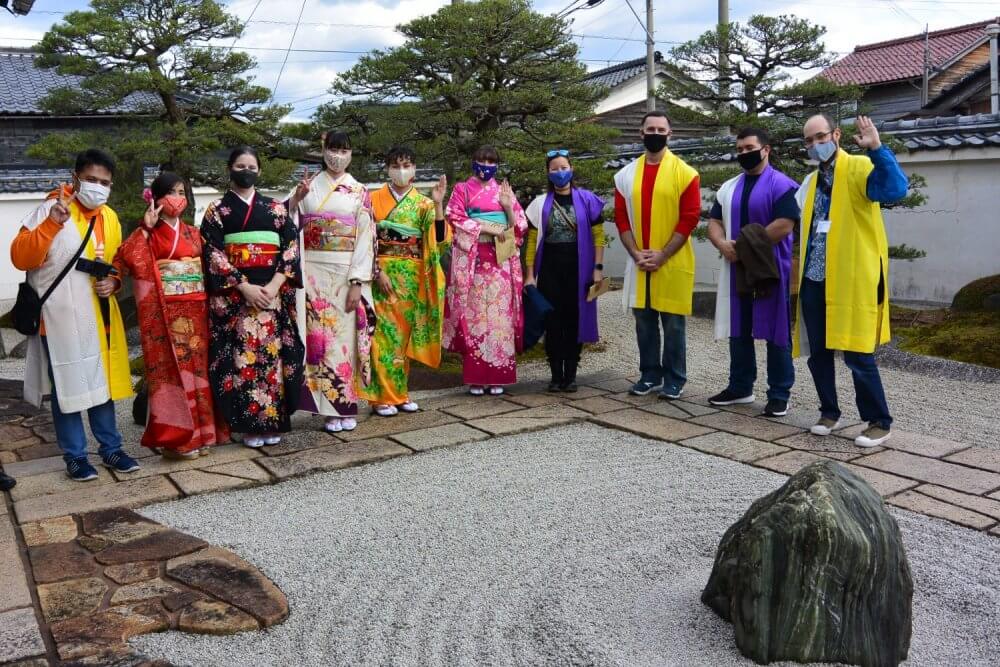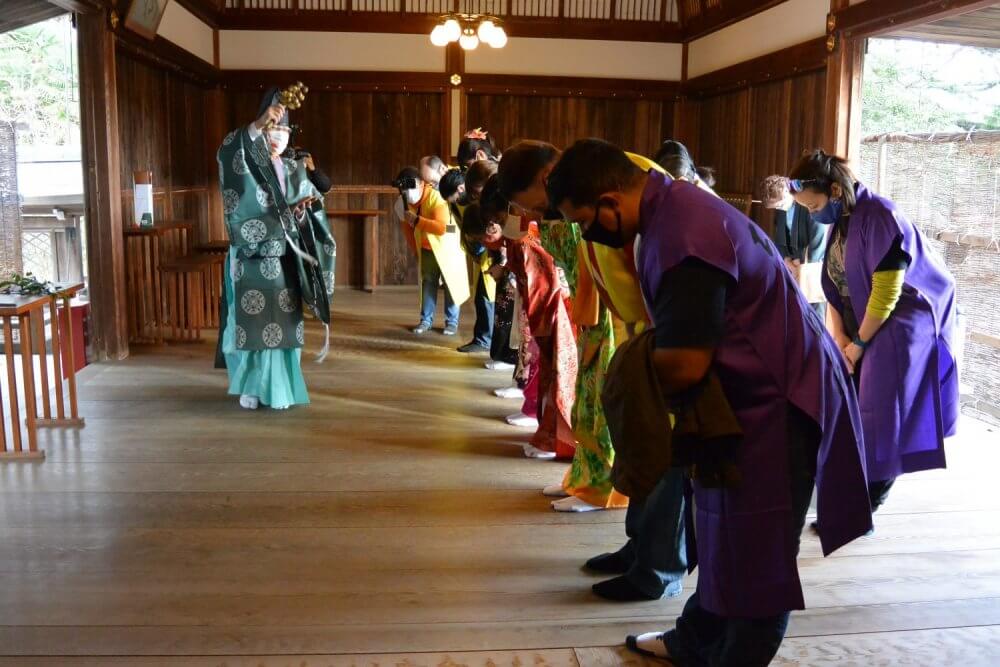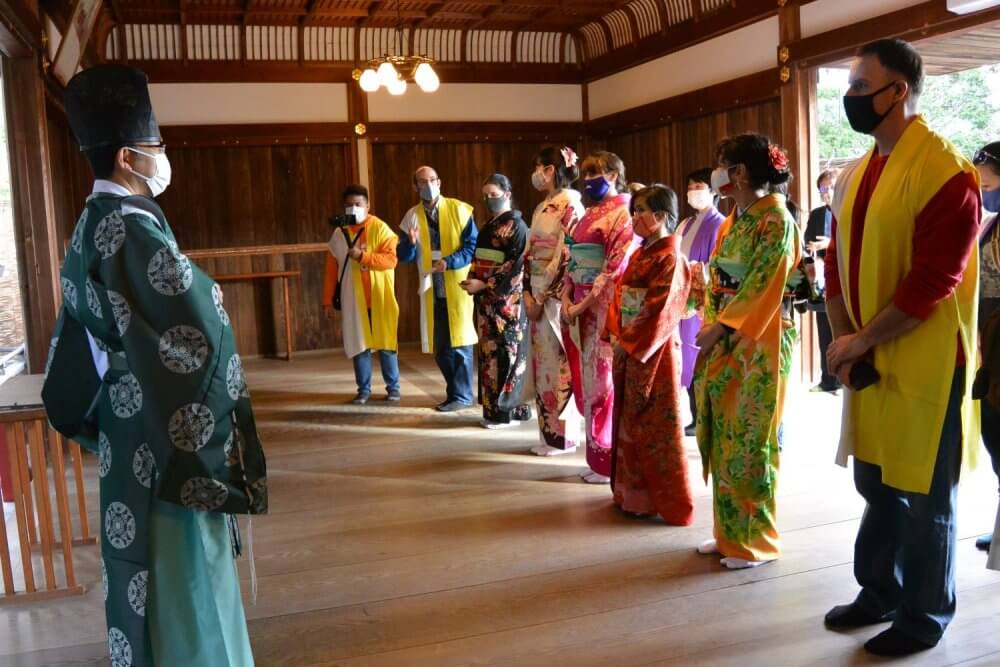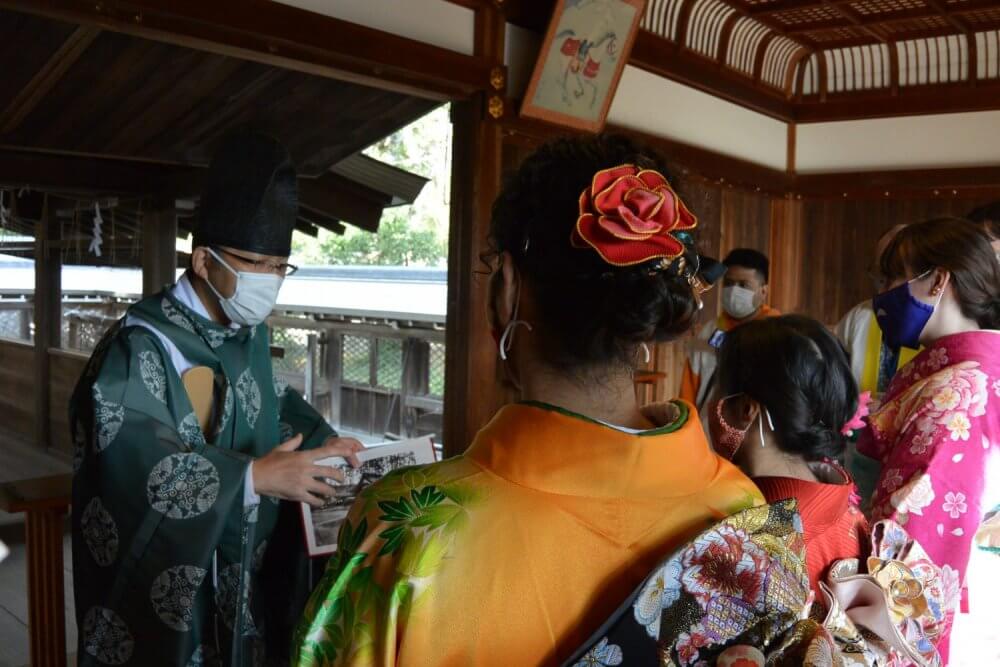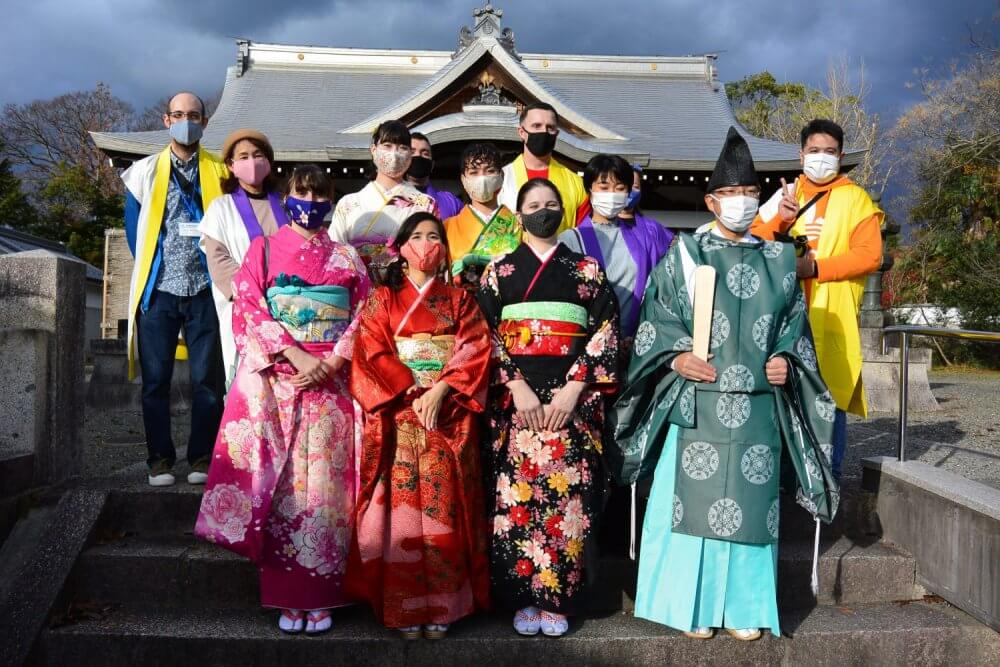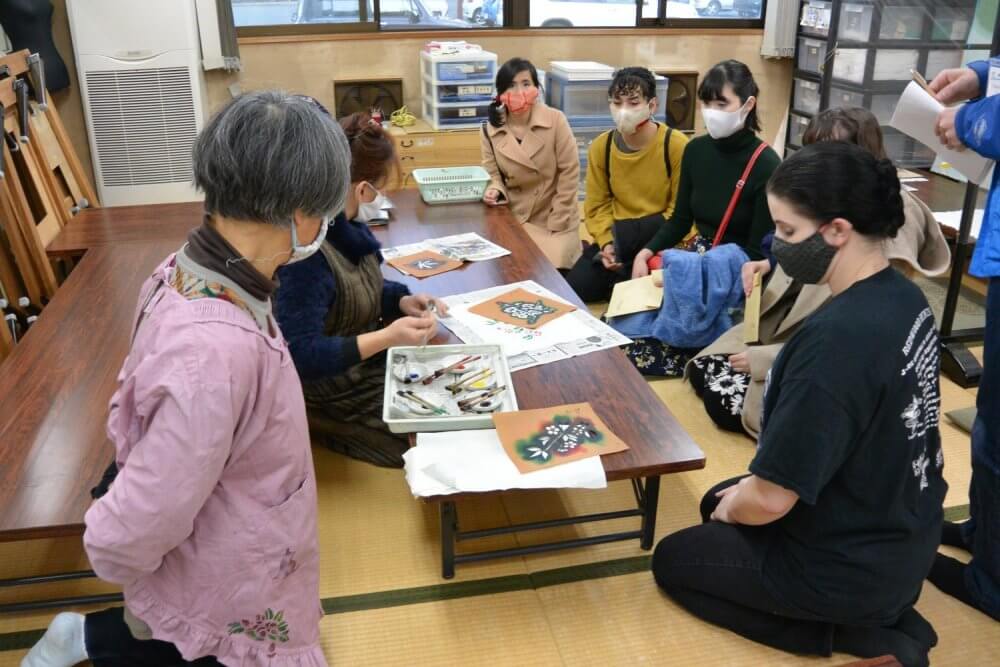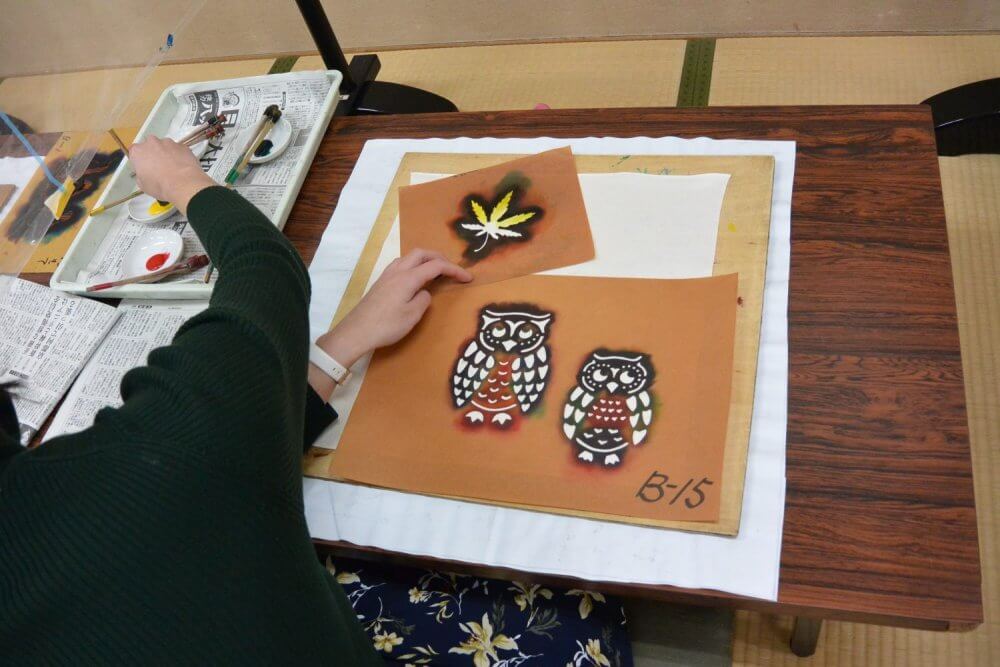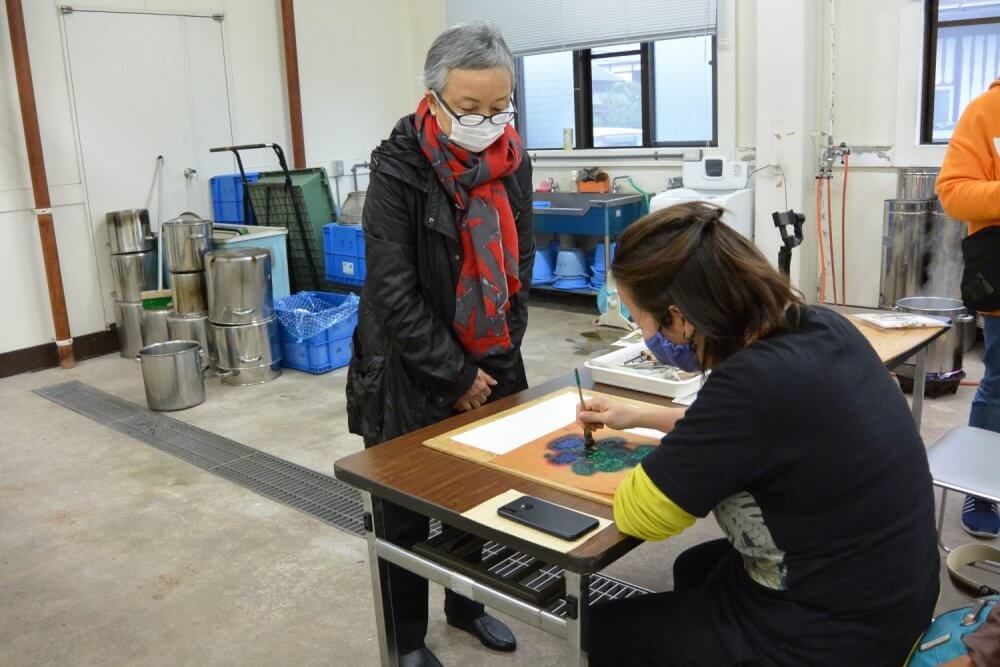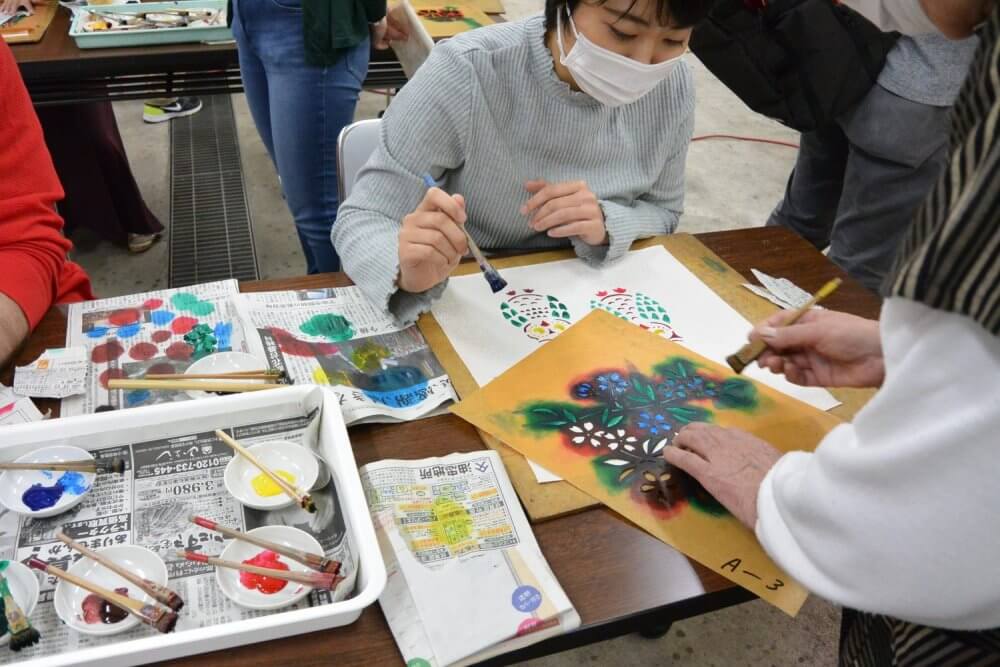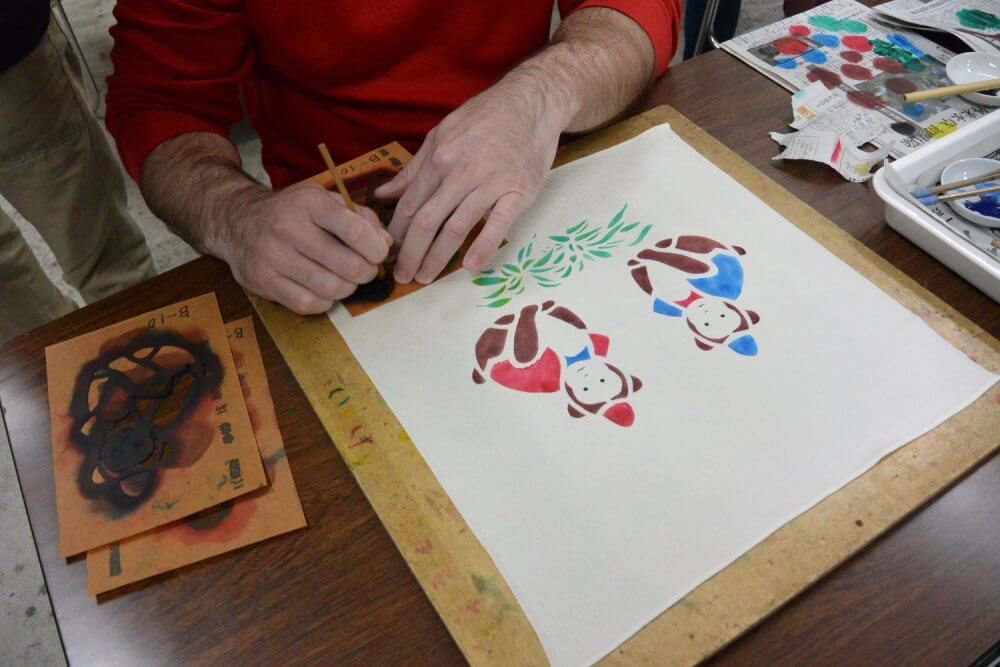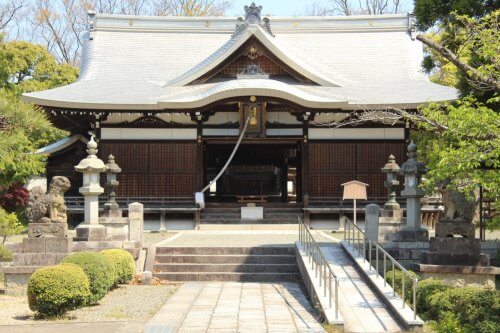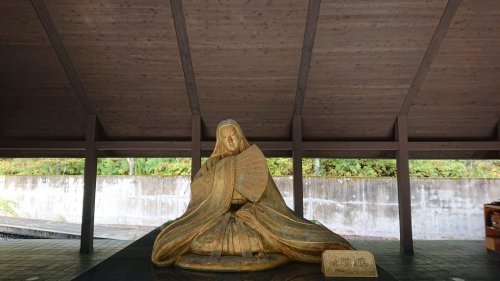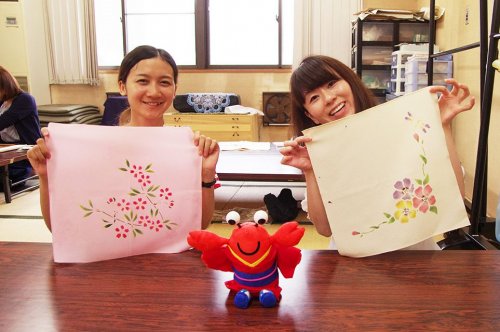Blog
Posted: December 7
The Quest for Silk – Chirimen Tour
Walking around the streets of Kyotango it isn’t at all strange to hear a loud “GAchang-GAchang” noise coming out of regular houses. When I asked what it was I was told it was the sound of “chirimen” looms.
A example of chirimen silk
Chirimen is a type of silk crepe with a gentle bumpy texture. It is used primarily for making kimono. For 300 years chirimen has been produced in the Tango area of northern Kyoto prefecture. Unsurprisingly production has dropped off since then with the decline in people wearing kimono.
This year marks the 300th anniversary of chirimen production. Despite this years hardships it seemed fitting to share the chance to experience this special product with some of the foreigners living locally. Naturally, reasonable precautions were taken. It is with great joy that we were able to make “The Quest for Silk – Chrimen Tour”.
Chirimen Kimono
There were 5 chirimen kimono available to be worn on the day, so we held a raffle to see who would be the lucky participants. It was only open to women, but then womens’ kimono are so much more colorful than mens’. Also everyone who didn’t wear a kimono got to wear a “happi”, also made of chirimen. Happi are type of over coat traditionally worn by house servants. In modern times they commonly worn at festivals or used to promote a local business or products at events.
Not all events feature press so heavily The happi came in two color options Womens’ kimono typically feature floral, or leaf patterns. Mountain landscapes or elegant birds are not uncommon either.
The kimono had long sleeves that draped almost to the ground. This style is called “furi-sode”, which appropriately means “swinging sleeve”.
As it was a walking tour there was some concern about our 5 kimono models keeping up. Kimono are wrapped quite tightly and can limit the length of ones strides. It didn’t seem to prove too much of a problem in the end. We checked our speed a bit and they kept up without too much apparent difficulty. Although one of them did get told off by the kimono dresser for her steps being too big.
Strolling though Amino in Kimono “Tango Chirimen”, caption from the happi
Tayuh Textiles – A Learning Experience
Our quest started from Amity Tango and we walked to Tayuh Textiles (Japanese language). Being a Saturday most of the looms were not in use, but they did get one working for us.
Stood next to the machines they are very loud, even one machine makes it hard to hear someone nearby. Tayuh have a total of 35 machines, so when they are all going it would be nigh impossible to hear anything else.
At Tayuh we learned about how chirimen goes from a fine thread about half the thickness of a human hair to a bolt of fabric ready to be dyed and made into a kimono. And how each thread is spun more than 3000 times per meter to make the characteristic bumpy texture so important to chirimen silk.
We were also shown the stone garden behind the factory. It’s layout is based on a temple in Kyoto, and it is very well maintained. It makes a great spot for a photo op.
Listening to how chirimen is made while wearing kimono Squint and you might see it, this is a single thread after it comes out of a cocoon before it is spun into workable thread Tayuh on an ordinary working day has 35 looms on the go at once Photo op in the stone garden
Amino Shrine – A Local Deity Bestows a Blessing
After we left the factory we started walking back towards Amity, but stopped at Amino Shrine on the way. There we learned a little local history, and receive a blessing from the deities enshrined there. I’ve visited many Shinto shrines but I’ve never received a blessing before. It’s an experience I will cherish.
The priest showed us some very rare photographs. About 100 years ago a new building to house the shrine had been built and 6 years later the 1927 Northern Kyoto earthquake struck. The photos showed the roof of the shrine after having fallen straight down, almost as if it had never been supported by walls in the first place. In a country as prone to earthquakes as Japan this sort of story must be all to common.
Being blessed at Amino shrine Receiving a local history lesson A rare photograph from a trying time Outside the shrine, the natural lighting really shows off the colors of the kimono
Handkerchief Dyeing – The Treasure at the End of the Quest
After we returned to Amity it was time for the final part of our “quest”. Each guest was given a chirimen handkerchief and then chose what pattern they wanted to dye onto it. There were a lot of different types and sizes of flowers, cats, owls, dolls and other traditional patterns.
After learning the technique for applying the dyes they were free to apply colors to their patterns however they saw fit. After they had finished, the dye was set with an iron and then they could take it home to remember this special day forever. When I asked how they wanted to use the handkerchief most people wanted to put it on display or possibly send it home as a gift.
You don’t want to dye fabrics wearing your best kimono There were lots of patterns to choose from There were staff on hand to help with technique and to offer more colors This design was inspired by carp shaped windsocks that are flown in spring You can mix and match patterns to customize your handkerchief to your hearts content Monkeys at play
The Quest for Silk comes to an end
That brought our tour to an end. The small group size made it easy to ask questions and create friendships. Hopefully soon we’ll all be able to travel further afield and more people will be able to experience Kyotango’s special fabric, and kimono culture firsthand.

